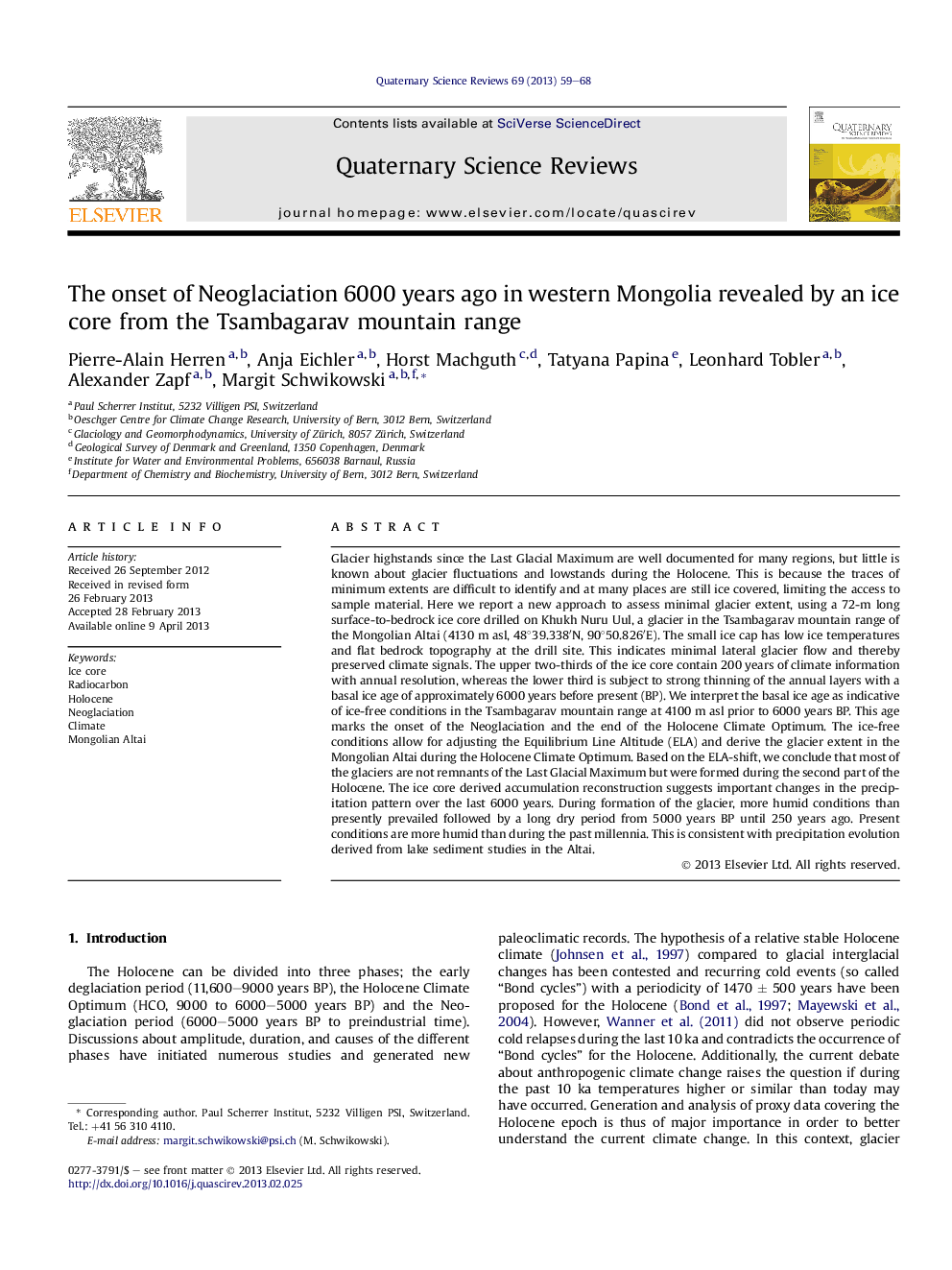| کد مقاله | کد نشریه | سال انتشار | مقاله انگلیسی | نسخه تمام متن |
|---|---|---|---|---|
| 4736331 | 1640865 | 2013 | 10 صفحه PDF | دانلود رایگان |
• First successful analysis of an ice core from the Mongolian Altai.
• Onset of Neoglaciation and ending of Holocene Climate Optimum temporally refined.
• During the Holocene Climate Optimum majority of Mongolian glaciers disappeared.
• Derived accumulation suggests wet past two centuries preceded by dry millennia.
Glacier highstands since the Last Glacial Maximum are well documented for many regions, but little is known about glacier fluctuations and lowstands during the Holocene. This is because the traces of minimum extents are difficult to identify and at many places are still ice covered, limiting the access to sample material. Here we report a new approach to assess minimal glacier extent, using a 72-m long surface-to-bedrock ice core drilled on Khukh Nuru Uul, a glacier in the Tsambagarav mountain range of the Mongolian Altai (4130 m asl, 48°39.338′N, 90°50.826′E). The small ice cap has low ice temperatures and flat bedrock topography at the drill site. This indicates minimal lateral glacier flow and thereby preserved climate signals. The upper two-thirds of the ice core contain 200 years of climate information with annual resolution, whereas the lower third is subject to strong thinning of the annual layers with a basal ice age of approximately 6000 years before present (BP). We interpret the basal ice age as indicative of ice-free conditions in the Tsambagarav mountain range at 4100 m asl prior to 6000 years BP. This age marks the onset of the Neoglaciation and the end of the Holocene Climate Optimum. The ice-free conditions allow for adjusting the Equilibrium Line Altitude (ELA) and derive the glacier extent in the Mongolian Altai during the Holocene Climate Optimum. Based on the ELA-shift, we conclude that most of the glaciers are not remnants of the Last Glacial Maximum but were formed during the second part of the Holocene. The ice core derived accumulation reconstruction suggests important changes in the precipitation pattern over the last 6000 years. During formation of the glacier, more humid conditions than presently prevailed followed by a long dry period from 5000 years BP until 250 years ago. Present conditions are more humid than during the past millennia. This is consistent with precipitation evolution derived from lake sediment studies in the Altai.
Journal: Quaternary Science Reviews - Volume 69, 1 June 2013, Pages 59–68
